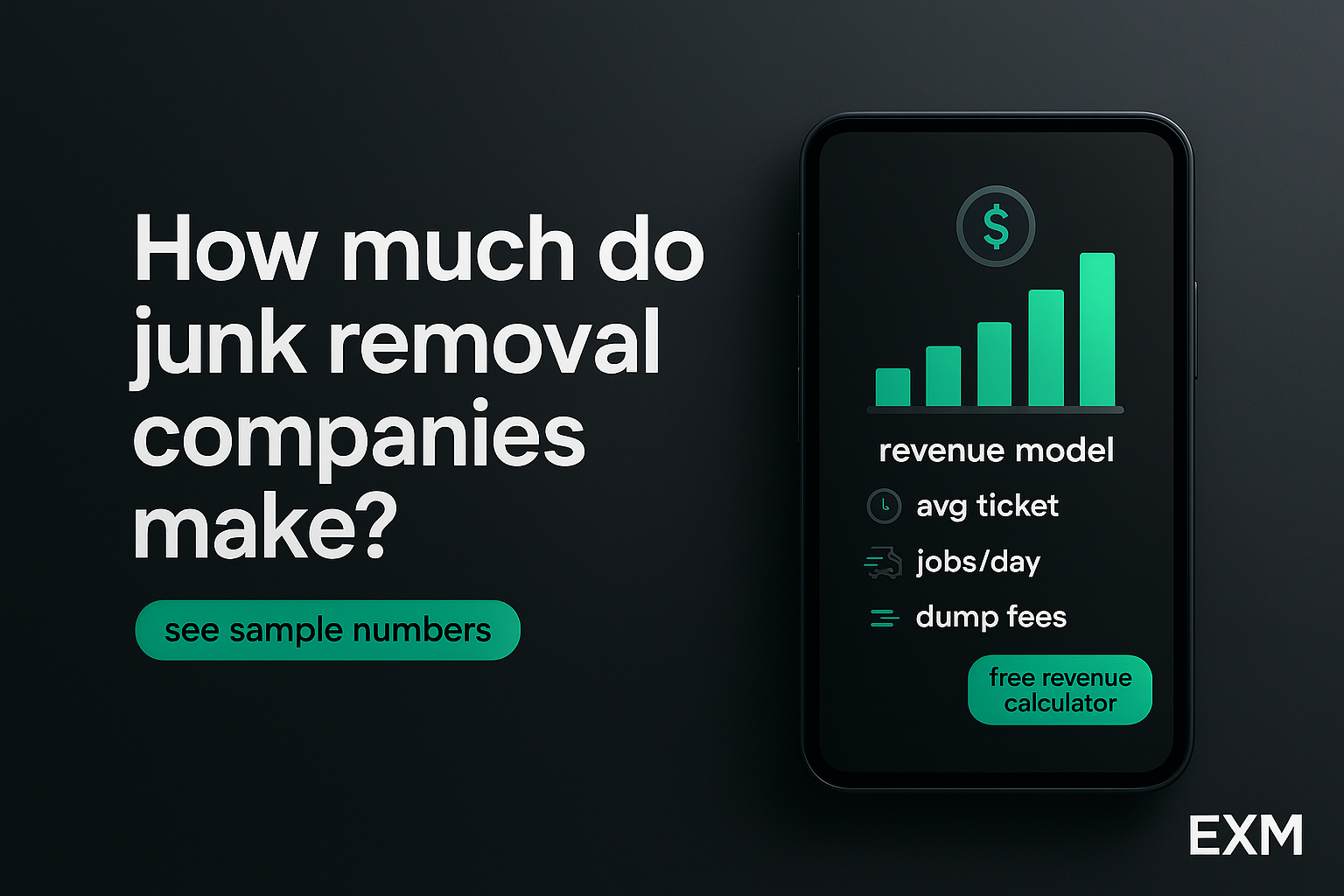It depends on jobs and routes.
Tight days make more. Long drives make less.
revenue drivers
- job size (single item vs full load)
- travel time and dump time
- add-ons (stairs, bagging, rush)
- reviews and replies (more bookings)
sample day math
- 3 tight jobs: steady day for solos
- 5 jobs, mixed loads: strong day
- 8 short curbside jobs: great hourly if routes are tight
- track hours, drive time, and dump time for each day
monthly targets (simple)
- set a weekly job goal
- aim for higher average ticket with bundles
- build two “hot zones” where you book often
add-on revenue
- bagging and light demo
- appliance or mattress add fees
- cleanouts and stairs
- reuse or resale when allowed
keep the margin
- set a price floor
- charge for long walks and heavy items
- use two-hour windows, not open days
- avoid free long quotes far away
faqs (people also ask)
- what is average monthly revenue?
it varies by jobs and routes. tight days earn more. - how many jobs per week is good?
15–30 solid jobs is a strong week for a small crew. - can you do this part-time?
yes. weekends work. pick small, local jobs. - what is the difference between revenue and profit?
profit is what is left after all costs.
related reads: is junk removal profitable, owner salary, how companies make money, tools to work faster
sources
cta: join ex-mattress — add your listing (28-day free trial)

